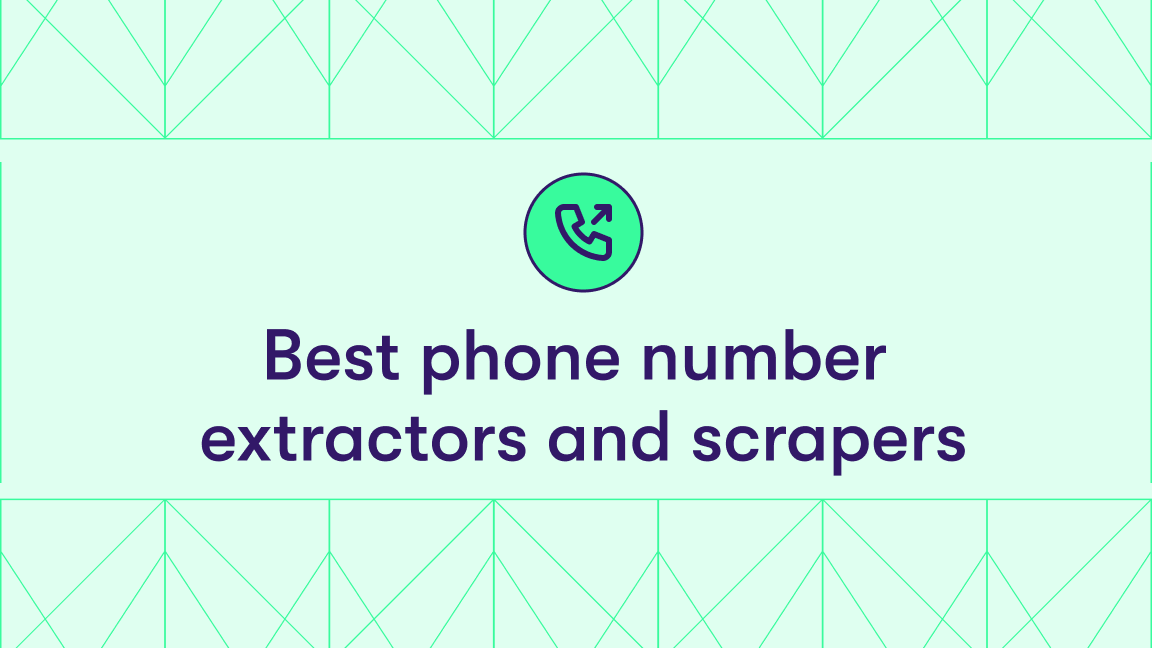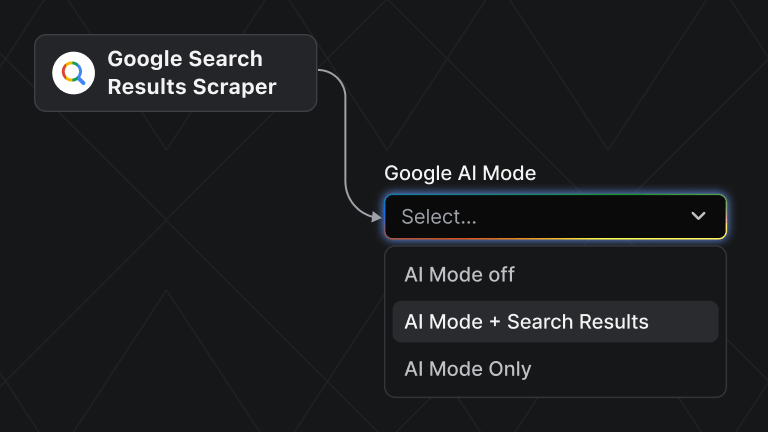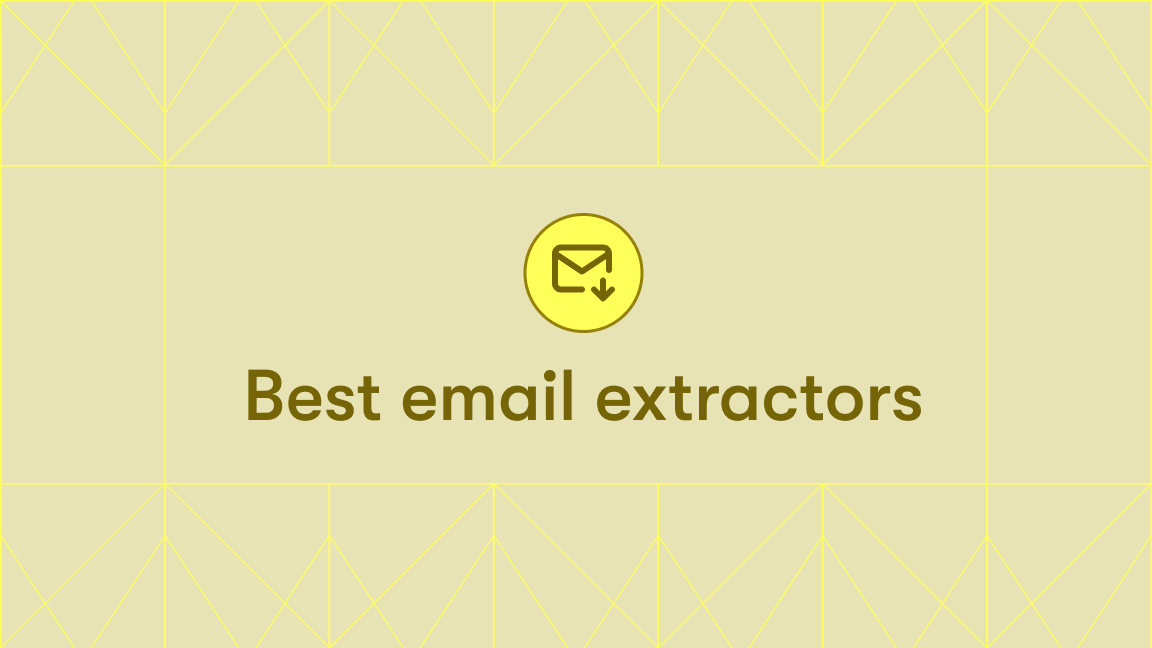The purpose of generating leads is to make contact with people who are potentially interested in what you have to offer. Get them to warm up to you, and they could become qualified prospects willing to purchase your service or product. That means more revenue.
But if you spend ages manually looking for leads that have no potential, you’re wasting your time. Many people simply don’t realize there are better and faster ways to find leads. And one of the most efficient ways is lead scraping.
What is lead scraping?
Lead scraping (also called web scraping for lead generation) is the process of using web scraping tools to get publicly available contact information from the web. Lead scraping is known to significantly speed up lead generation process.
Learn how itrinity scaled lead generation operations from 10 emails a day to 400 a week with Apify
Common lead scraping challenges
If generating leads is part of what you do, you don’t need us to tell you how difficult it is, but we’ll tell you anyway. Here are four issues with automated lead generation:
Challenge 1. Data relevance
Ensuring the accuracy and relevance of scraped data is crucial. Using only advanced scraping tools, scheduling scraping, and regularly updating scraping parameters can help maintain the integrity of your leads data.
Challenge 2. Scalability
Scaling web scraping operations to handle large volumes of data without compromising performance is a common challenge. Using robust cloud-based solutions can address this issue.
Challenge 3. Reliability of data influx
Anti-scraping protections, changes in the website layout, unreliable proxies can disrupt the regular flow of relevant data. If you are on a path of automated lead scraping, you have to make sure your web scraping providers have it covered on all fronts at all times.
Challenge 4. Legal considerations
Navigating the legal landscape of web scraping is essential to avoid potential legal issues when collecting leads. Understanding and complying with laws like GDPR or CCPA is critical when handling personal data.
Benefits of lead scraping
And now on to the benefits of generating leads automatically. It seems like there are more upsides than downsides to automated B2B lead generation:
Cost-effective marketing
In the year 2025, manual lead generation is a waste of time and money. Scraping provides a cost-effective solution to gather large amounts of lead data from the web quickly, autonomously, and without the need for expensive market research.
Data relevance
Most data is of no use if it's outdated. Scraping leads can make sure you always get the most relevant contact details that your potential leads list on the web in real time.
Data completeness
A good lead has to have a name, a way to contact them, and relevant context why this person would make a good lead. All of this can be collected using web scraping tools.
Better targeting
By scraping lead data that is relevant to their niche, businesses can target their campaigns more effectively and not waste time trying to reach the wrong audience with the wrong message.
Integration-friendly data format
Lead scraping enables you not only to get the data you need, it also makes sure that data is organized. That way, a file full of leads in machine readable format like JSON, CSV, or HTML can be added anywhere across your lead databases, apps, or CRM systems with little to no technicalities.
Where to scrape leads?
Depending on your purpose, literally any website can contain valuable contact information that can turn strangers into leads and leads into customers or partners. Here are just a few examples:
- LinkedIn and Indeed: ideal space for B2B leads
- Google Maps: perfect for identifying local leads
- TikTok, Facebook, Twitter, Instagram: great for social media expansion
- Whatsapp, Telegram: good choices for phone number-based lead search
- Google Search: good place for basic lead generation
- Zillow: useful for real estate leads
If you want to scrape any publicly available information from the web, you might use a tool like Web Scraper, which can crawl and scrape data from any website. But if you’re only interested in finding business leads on LinkedIn, YouTube, Google Maps or some other specific website like the ones above, a better option is a lead finder explicitly designed for the task.
Examples of how to use web scraping for lead generation
There’s a range of business lead scrapers that can speed up lead generation, depending on the direction of your search. Any scraper that can extract contact detail information from a website is a lead gen scraper. Here are just a few of them:
Lead scraping for any website
The most universal of them all, Contact Details Scraper is the ideal tool to start building targeted lead lists from any website. It can collect contact details such as emails, phone numbers, and social media handles such as Twitter/X or LinkedIn.
Lead scraping in social media
Social media is the go-to place to find influencers to collaborate with. Facebook Pages Scraper will get all contact info from chosen public Facebook pages. And with Social Media Finder, you can find social media handles across multiple social media platforms at once (13!). And Fast Youtube Channel Scraper can extract contact details from YouTube channel descriptions.
Lead scraping in real estate
Using Zillow scrapers, real estate lead search can become a breeze. Zillow web scraper can quickly gather data on property listings, including broker agency’s name, agent’s email, name, license, and phone number to contact.
Lead scraping in B2B
B2B companies can benefit from any of our 100+ LinkedIn web scrapers to extract contact details and company information. LinkedIn Company URL Finder can speed things up by automating the collection of company contact details and storing them in a list for your marketing or sales teams. Another example of helping you get company data is Crunchbase Scraper or Yellow Pages US Scraper.
Lead scraping for local businesses
Google Maps Email Extractor will automate collecting local leads from any Google Maps area. This tool works well with Google Maps search, so it will enable you to find leads from all restaurants in the area, or all hospitals, or all schools.
If you already know specific places you want to target for leads, use Google Maps Business Scraper. It will extract place name, address, website, email, phone number and more by URLs. It's a perfect option if you have a database of Google place URLs or place IDs to start with.
How to work with scraped leads?
Once you have your leads you can try multiple strategies to convert them into customers. Here's one for example:
- Integrate leads into your CRM for the convenience of viewing.
- Divide your leads into segments based on demographics, behaviors, or engagement levels.
- Come up with personalized outreach strategies. Collaborate across sales and marketing teams for personalized cold emails, phone calls, or other tailored offers. Use appointment scheduling to ensure you never miss meetings or video calls with them.
- Implement a lead scoring system to prioritize leads based on their likelihood to convert.
- Use feedback from your leads to run retargeting campaigns across digital platforms.
Is it legal to scrape leads?
Scraping publicly available online data is legal. But there still are regulations regarding personal data (such as the GDPR or CCPA) that you need to comply with. If accumulating contact information, always double-check your results and ensure they don’t violate any personal data or copyright regulations.
Web scraping is an indispensable tool for lead generation in 2025. If you’re interested in more automation options and web scrapers for lead generation, don’t forget to explore the Apify Store. We have over 2,000 scraping tools you can try for free, with 300 lead gen tools among them.
Case study: How itrinity scaled lead gen ops from 10 emails a day to 400 a week with Apify
itrinity is a fast-growing portfolio of highly profitable SaaS businesses with millions of users across the globe. It runs six SaaS products, including EmailListVerify and Warmup Inbox, designed to improve email deliverability and inbox reputation.
The itrinity team saw strong affiliate traffic from YouTube and wanted to scale it. But their outreach process was slow and capped at 10 emails per day, limited by manual captcha-solving and IP throttling. Facing the daunting task of manually verifying email addresses and warming up inboxes, the need for an efficient, scalable solution was clear.
With Apify, itrinity:
- Scaled from 50 to 400 emails in a week
- Saved 40+ hours on manual work
- Achieved a wider affiliate reach and faster time-to-contact








